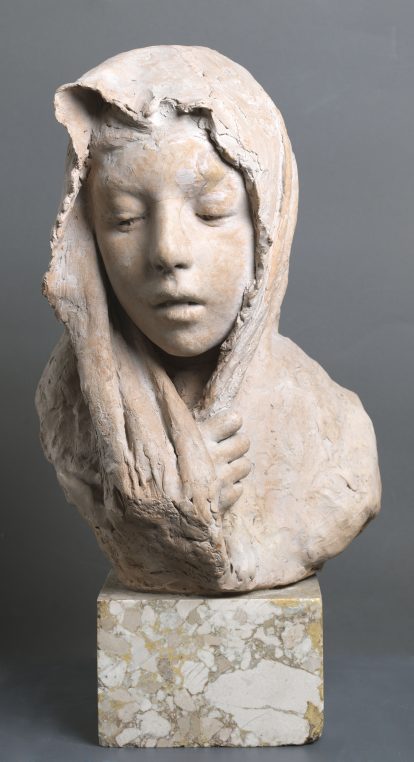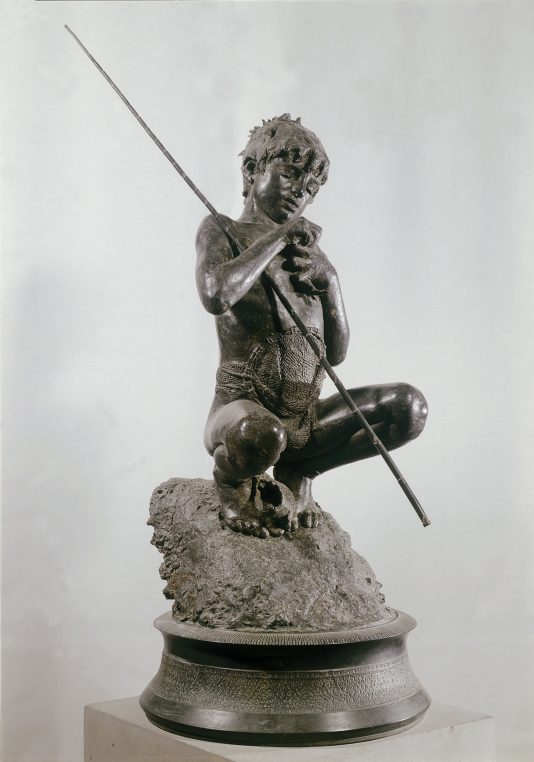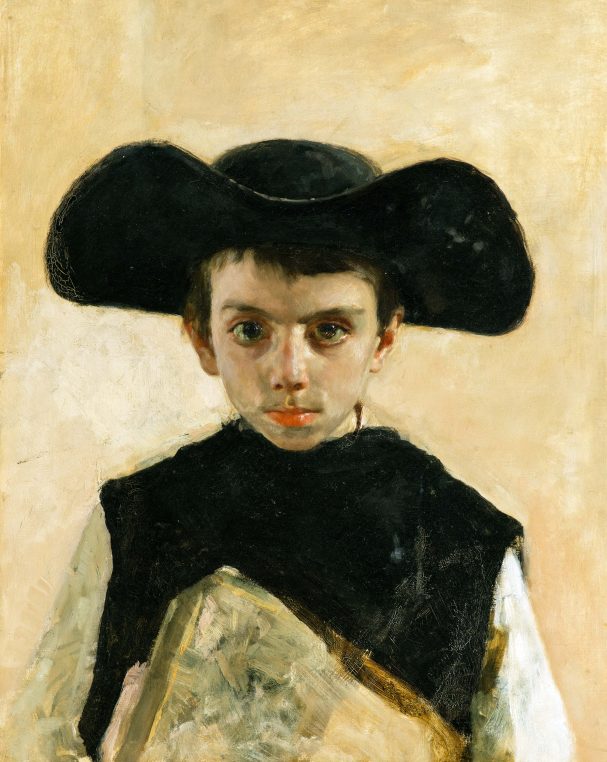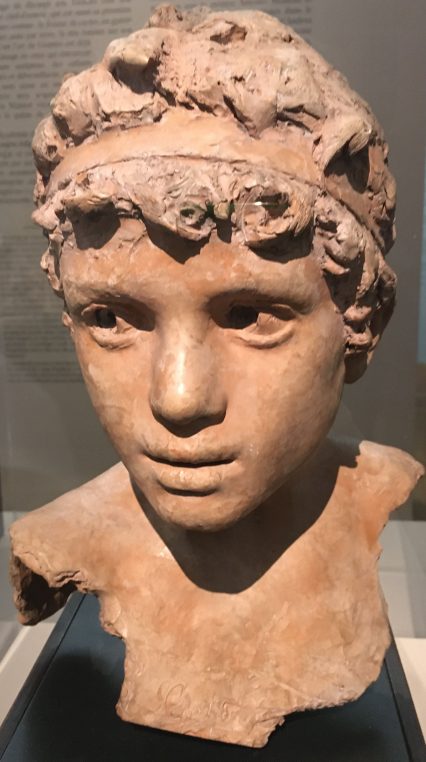No one has ever known the name of this large avenue which separates Grand Palais from Petit Palais. It is called avenue Winston Churchill and is delimited on the South by the great Prime minister’s statue (without its original cigar) and on the North by de Gaulle’s and Clemenceau’s. This week, it is the epicenter of all cultural activities with, the FIAC opening on Wednesday (for the 10 000 vips) and on Thursday for the rest of the world. With the delightful Neapolitan sculptor Gemito and Yan Pei-Ming at the Petit Palais. And Toulouse Lautrec and Greco at the Grand Palais. Beware of traffic jams inside and outside these two exhibition halls!

Greco, St Martin and the Poor, 1597-1599, Washington National Art Gallery of Art. Pablo Picasso was inspired by many of his paintings
Petit Palais’s director, Christophe Leribault has a knack for bringing to Paris foreign celebrities who have never been shown here. And Vincenzo Gemito, a self taught child from the street, is definitely a find. Born in 1852 and immediately abandoned in a convent, he will be famous at 25 and exhibited at the Paris Universal exhibition of 1878. This exhibition curated with the Museo Capodimonte in Naples shows 120 sculptures and drawings. Some of these are so realistic that they were acquired by the King’s palace when the artist was only 17. His studio, which he shares with fellow artists, is set in an abandoned convent and he concentrates on street children and fishermen, after having studied the technique of nativity scenes.

Vincenzo Gemito, Head of a little girl, [Testa di Fanciulla] 1870-1872, © Museo e Certosa di San Martino, Naples / Photo Fabio Speranza

Gemito, Little fisherman, [Pescatorello], 1878, Florence, Museo Nazionale del Bargello
Photo Scala Archives

Gelito, The Water Carrier, [Acquaiolo], 1881, Paris, musée d’Orsay, Photo RMN-Grand Palais/Hervé Lewandowski

Antonio Mancini, The Little Priest, [O’Prevetariello], 1870, Naples, Certosa e Museo di San Martino ©Ministero per i beni e le attività culturali et del turismo

Petit Palais, Gemito, until January 26.
Share this Post

2 Comments on “Avenue Winston Churchill is at the centre of Paris’ arts”
Thanks Laure. As per usual, so informative. We are coming to Paris for a week on 2/12 so hopefully will get to see your suggestions. Would also love to see you if you’re still talking to us Brits by then!! Saw your article in Graydon Carter’s new Airmail!!!! Bravo! Big X Paula
My dear Laure, the world is shifting and is no longer delimited by two giants of the XX Century…both the Gemito and the El Greco exhibits reafirm this – and this is all happening on one parisian street!!! France was fascinated by the arrival of Catherine de Medici from Italy in the XVI Century and then by Marie de Medici in the XVII, who created the Medici Fountain at the Jardin du Luxembourg…then came Marie Therese of Spain to embrace the Sun…So happy to see that through culture, and that by just crossing a street, France, Italy, and Spain continue delight our hearts…thank you for sharing this with us!!!